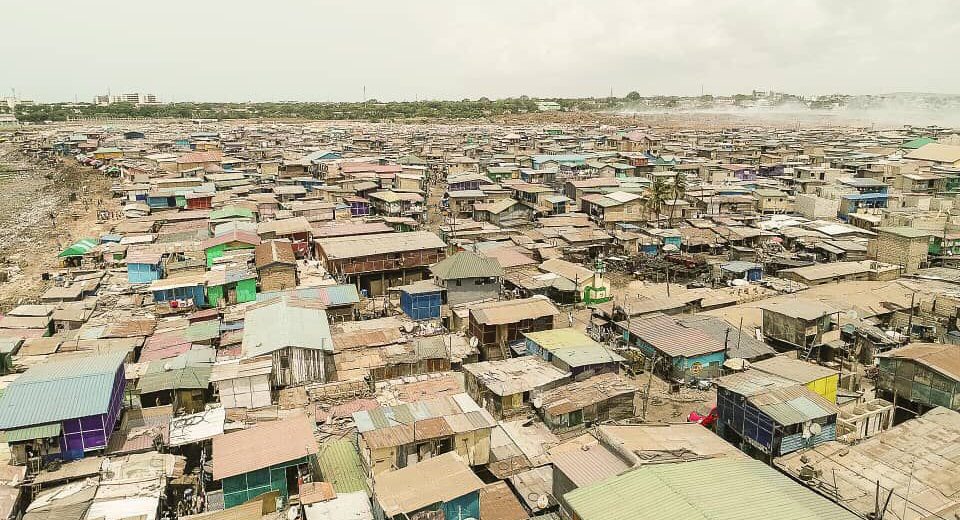
BEAUTY IN THE SLUM: NAVIGATING THE PARADOX IN THE ASHAIMAN-LAKA SLUM
Entering the Zongo-Laka slum in Ashaiman, I was immediately struck by the palpable contrast between the poverty and the beauty that existed within the community. Despite the challenging living conditions, there was a sense of resilience and creativity that shone through in the vibrant colors of the homes and the smiles of the residents. There is a contrast between hope and despair that permeates the air. Amidst the maze-like pathways and makeshift homes, life pulsates with both vibrancy and struggle. The slum’s busy market activity intertwines with the gloomy echoes of laughter and hardship, crafting a narrative of resilience amid adversity. Where lies the fate and hope for these slum dwellers?
In taking this bold step to visit the famous Laka slum in search of answers to this question, I discovered some interesting information to develop this article.
The busy Ashaiman community
Ashaiman is located in the Greater Accra Region of Ghana. It is known for its diverse population, vibrant markets, and rich cultural heritage. Originally established as a settlement for workers of the Tema Industrial Area, Ashaiman has grown into a thriving urban center with a mix of residential, commercial, and industrial activities. The town is also home to various slum communities, including the Laka slum, where residents face challenges such as poverty, inadequate sanitation, and limited access to basic services.
Famed for its lively markets and community bonds, Laka paints a picture of resilience amidst adversity. As I navigate the curving roads leading to the slum, anticipation builds for the sights and sounds that await. With a population of approximately 10,000 residents, this sprawling slum stands as a testament to the challenges and triumphs of urban life in Ghana.
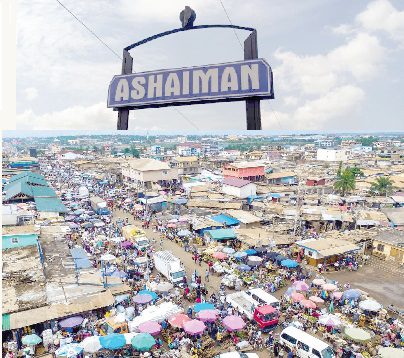
The Ashaiman community is characterized by numerous clusters of slums. Photo credit: graphic.com.gh
Misplaced Priorities or an Affirmation of Life?
As one ventures deeper into the alleyway dwellings, the sights and sounds of urban life fade into the background, replaced by a harshness of poverty and despair. Homes, if they can be called as such, are little more than rickety structures. Despite the challenges, these slum dwellers have a unique taste for fashion. I mean their investment for fashion is huge. My engagement with one of the residents by name Keizia Ramatu confirmed it.
It was an unexpected encounter, a chanced meeting that would alter the course of my perception forever. At first, she was just another face in the crowd, lost amidst the chaos of the slum. But, as she emerged from the shadows, clad in a short designer tight-fitting dress above her thighs, I was captivated by her presence.
Despite the harsh realities of her environment, Keizia radiated a feeling of cuteness and elegance. Her hair, intricately braided cascading down her shoulders and adorned with expensive beads. Framing a face adorned with soft, captivating features, she exudes a timeless beauty. Her eyes, an attractive type that seems to shift with her mood.
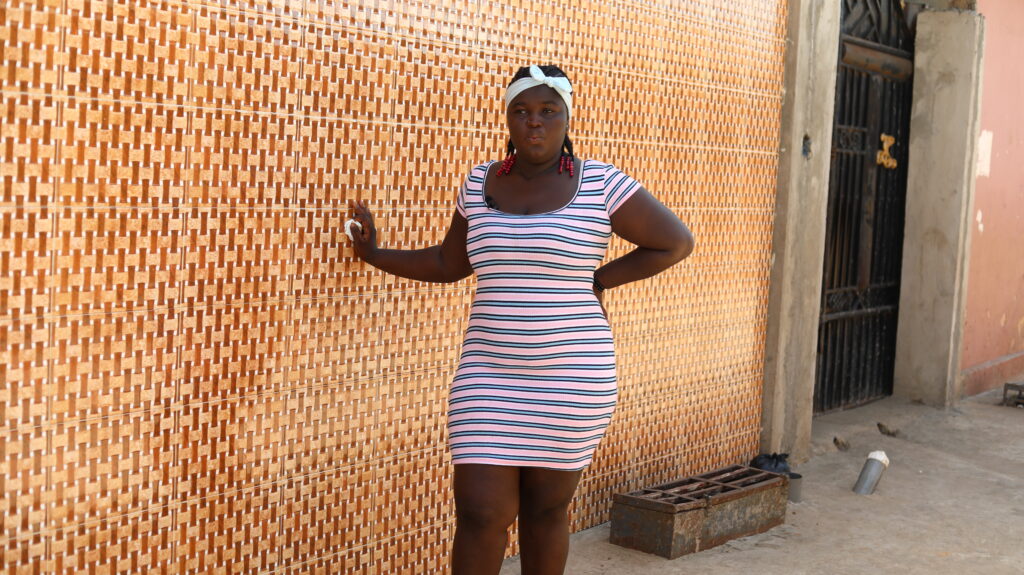
Keizia Ramatu has a refined taste in fashion and firmly believes that poverty has no bearing on one’s attire.
Her body shape is a celebration of curves, each shape carved carefully with beauty. Every movement highlights her feminine figure, a masterpiece of curves that draw the eye and leave an indelible impression. In her choice of fashion, she is a visionary, effortlessly blending sophistication with a touch of playfulness. From the elegance of her accessories to the meticulous attention to detail in her joints, it’s clear that Keizia has a discerning eye for quality and craftsmanship. Everything about her spoke of a beauty untouched by the hardships of life in the slum. As she passed by, the scent of her perfume lingered in the air, a reminder of the luxury she carried with her amidst the poverty.
Approaching her, I could not help but notice the diamond ices sparkling on her teeth as she smiles, a stark contrast to the grim reality of her circumstances. Yet, despite being a single mother to a five-year-old boy and unemployed, Keizia faced life’s challenges with unwavering strength.
In our conversation, she shared with me the harsh realities of poverty in the slum – the struggle to put food on the table, the lack of access to basic amenities, and the constant threat of violence and exploitation.
“People whisper as I pass by, their eyes wide with disbelief and envy. They cannot understand how someone could inhabit the same space as them yet live a life so vastly different—a life of privilege and excess that seems worlds apart from their own.” Keizia continues: “Amidst the murmurs and stares, I remain unfazed, my confidence unwavering in the face of scrutiny.”
For this young lady, fashion is not merely a means of decoration, but a statement—a declaration of self-expression and defiance in the face of adversity.
“You may reside in a slum, but you refuse to be defined by it. Instead, you carve out your own path, weaving together threads of glamour to create an embroidery that is uniquely yours. And though many may doubt the authenticity of your existence within the confines of the slum, you know that true wealth lies not in material possessions, but in the richness of one’s spirit and the depth of one’s character.” She revealed.
She emphasized that life has been a relentless struggle. “It has been a constant act of balancing the responsibilities of motherhood with the harsh realities of survival. As a single parent, I bear the weight of providing for my son alone, a burden that often feels overwhelming.”
I could sense the urgency in her demeanor. With a gentle smile and a twinkle in her eye, she explained that she was in a rush to have an outfit sewn for her five-year-old son ahead of the upcoming Eid-ul-Fitr celebration.
In her hands, she clutched an expensive piece of fabric. For Keizia, this cloth is more than just material; it is a symbol of love, tradition, and the promise of a brighter tomorrow.
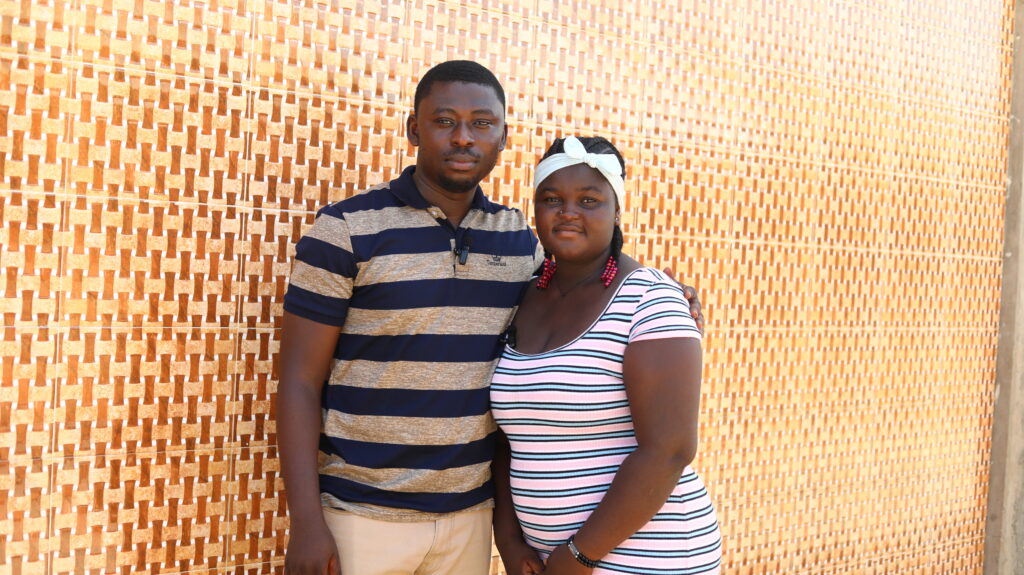
It has been a constant act of balancing the responsibilities of motherhood with the harsh realities of survival – Keizia
Fashion in the slum
Despite the challenges of his surroundings, Emmanuel Ayebuga is one of the finest fashion designers in the Laka slum. With meticulous attention to detail and an eye for elegance, 40-Year-Old Emmanuel has captured the hearts of slum dwellers who seek nothing but the best.
While his prices may seem expensive to some 150 Ghana Cedis equivalent to 11.76 UDS for a single outfit his clients know that quality comes at a price, and they are willing to pay for perfection.
With the upcoming Eid-ul-Fitr festival, Emmanuel finds himself inundated with requests for expensive traditional Muslim attires. From intricately embroidered dresses to flowing robes, each garment reflects the rich cultural heritage of the community.
Yet, amidst the flurry of activity in his shop, the fashion designer often finds himself pondering on the paradox of his client’s preferences. He marvels at their willingness to invest in quality and luxury, even in the face of economic hardship. “I sometimes wonder if they really can afford, but they pay,” he muses.
“Business here is good as it is booming. Never underestimate people living in the slum. They really have a taste for high-class fashion.” he added.
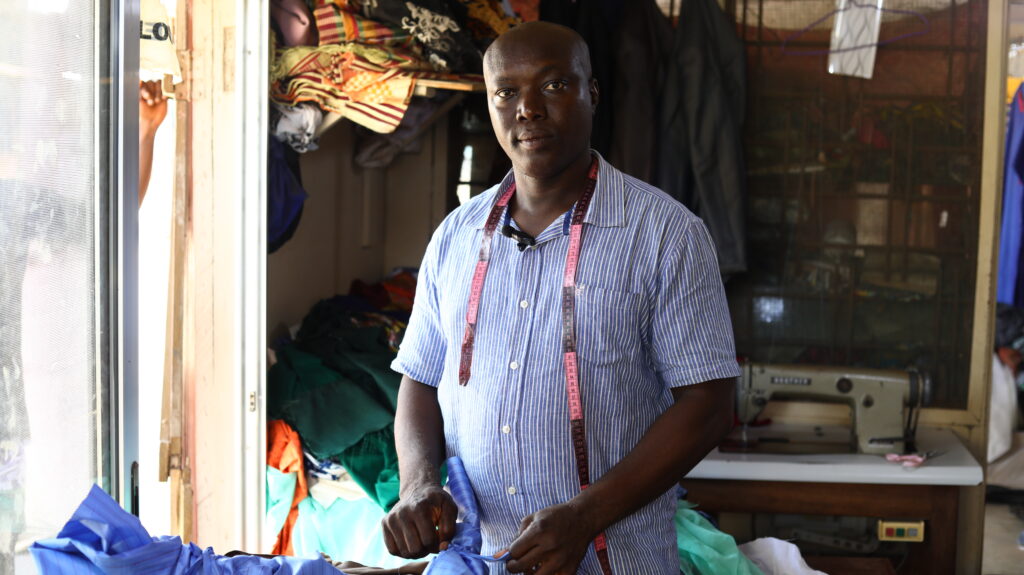
Sometimes I wonder if these residents can really afford my service, but they pay anyway – Fashion designer.
Influence of culture and music
The influence of culture and music intertwines with the daily lives of its inhabitants. Nowhere is this more evident than in this vibrant Laka slum community where residents, despite facing economic hardships, find solace and inspiration in the world of fashion, all thanks to the influence of the renowned Ghanaian Dancehall Artist, Stonebwoy, who calls the Laka slum home.
The Assemblyman for the area, Apokola Baba Rabiu said “the residents of the slum are often moved by fashion, a trend amplified by the presence of the influential musician within their midst.” This celebrated figure, known for his contributions to the Ghanaian music scene, has established a thriving boutique within the community, offering a dazzling array of designer shoes and clothing.“
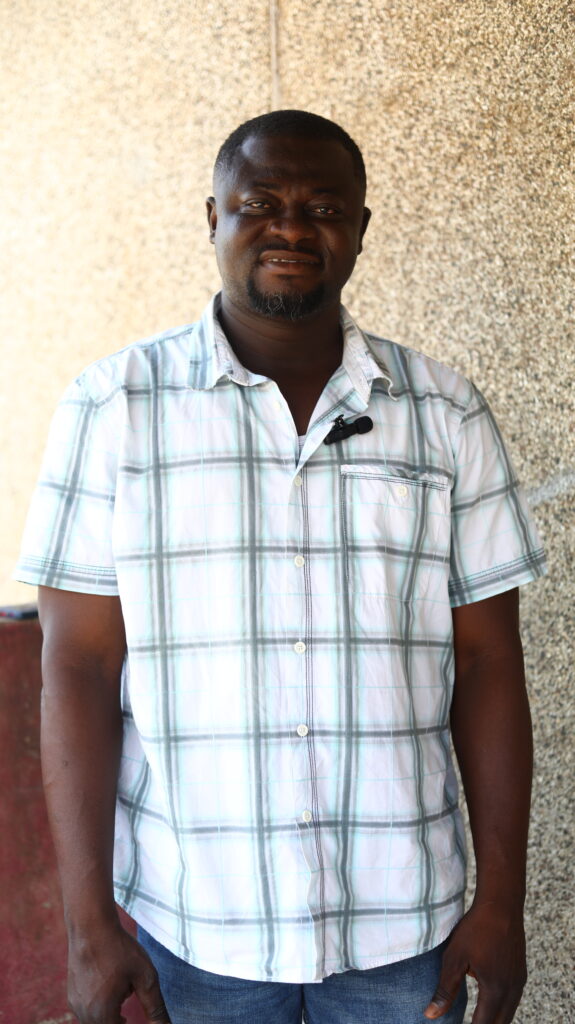
The residents of the slum are often moved by fashion trends, a trend amplified by the presence of the influential musician, Stonebwoy, within their midst.” – Assemblyman.
It is here, amidst the poverty-stricken homes, that the attraction of fashion vibrates. Young boys, eager to emulate their musical idol, flock to the boutique in droves, eagerly searching for the latest trends and styles. Despite their limited means, they are willing to invest in expensive shoes and clothes, driven by a desire to emulate the glamorous lifestyle portrayed by their beloved artist.

Dancehall artist Stonebwoy has a large fan base in Ghana, especially in Ashaiman, where he commands a lot of respect. Photo credit: yfmghana.com
Pathways Forward
Leaving the community, I could not shake the weight of my observations from my mind. The story of Keizia, and the community’s high taste for fashion speak volumes.
Addressing the challenges faced by settlers in the Laka slum requires a holistic approach that includes economic empowerment, as well as the enhancement of social and psychological well-being. Efforts must focus on providing accessible education, health services, and economic opportunities while fostering an environment that respects and integrates the community’s values and aspirations to address the Sustainable Development Goal 1, which seeks to target the eradication of poverty in all its forms.
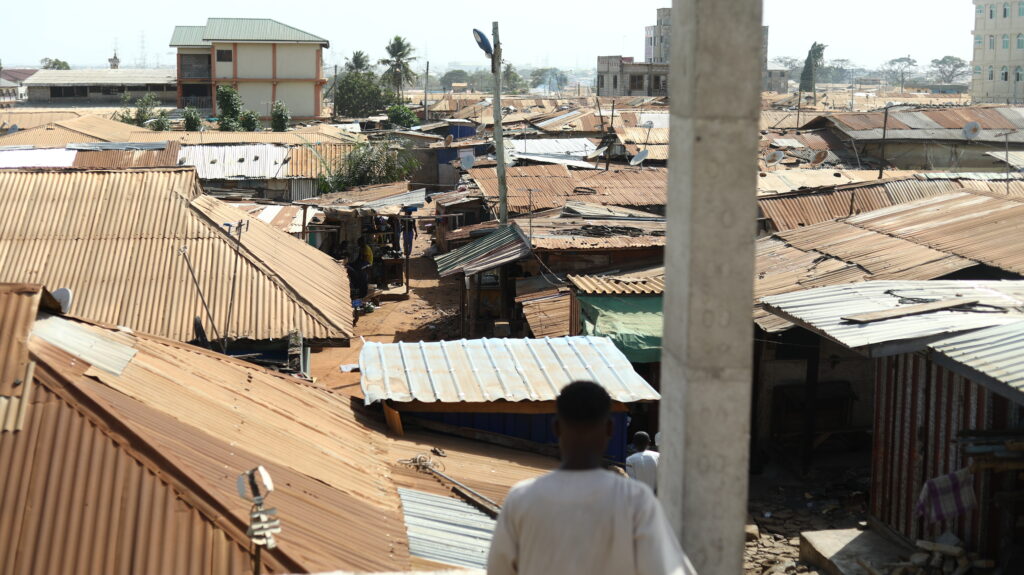
Laka Slum is situated in the heart of the Ashaiman market, surrounded by high-rise buildings and affluent communities.
-
SUMANI HAFIZ
28.04.2024Wow that’s a wonderful article I enjoy reading it, bravo!!!
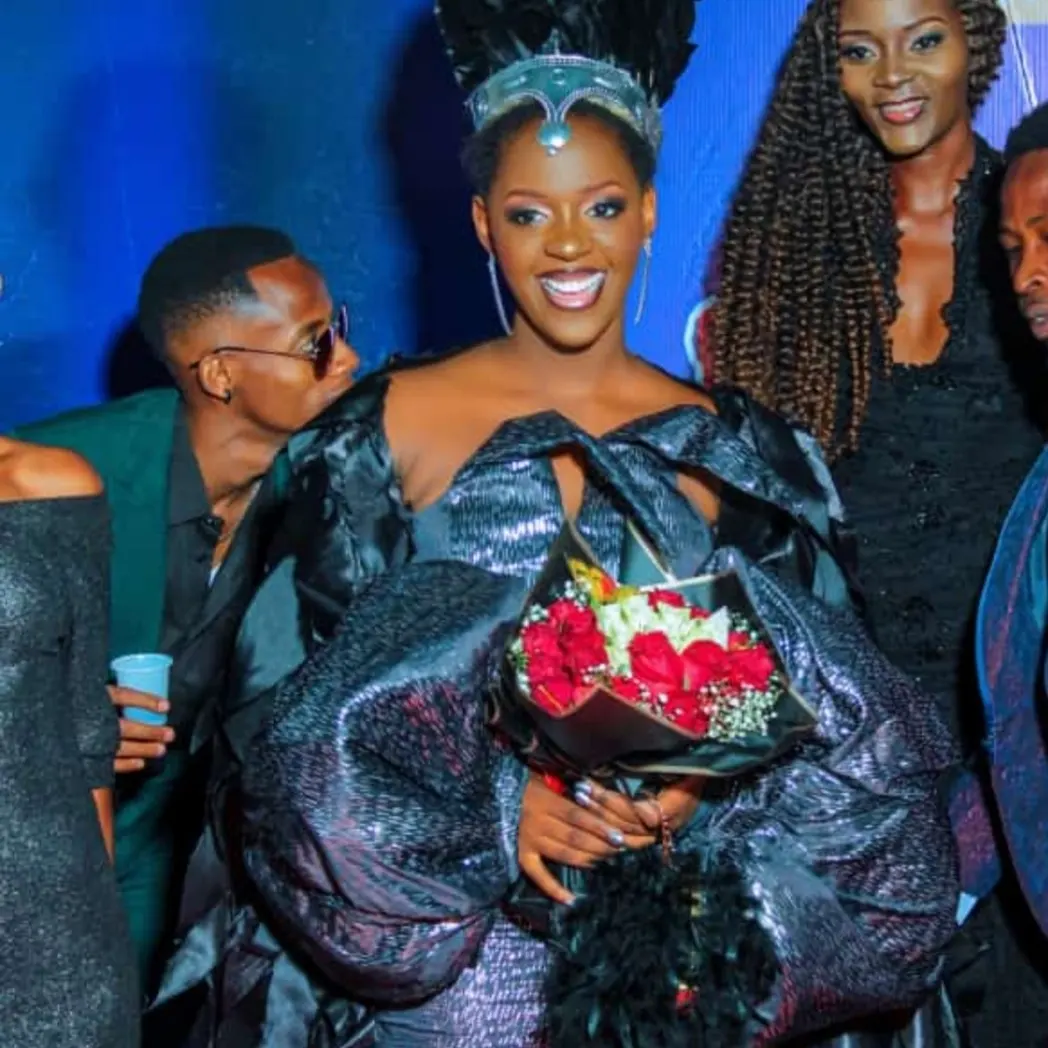
Leave a Reply